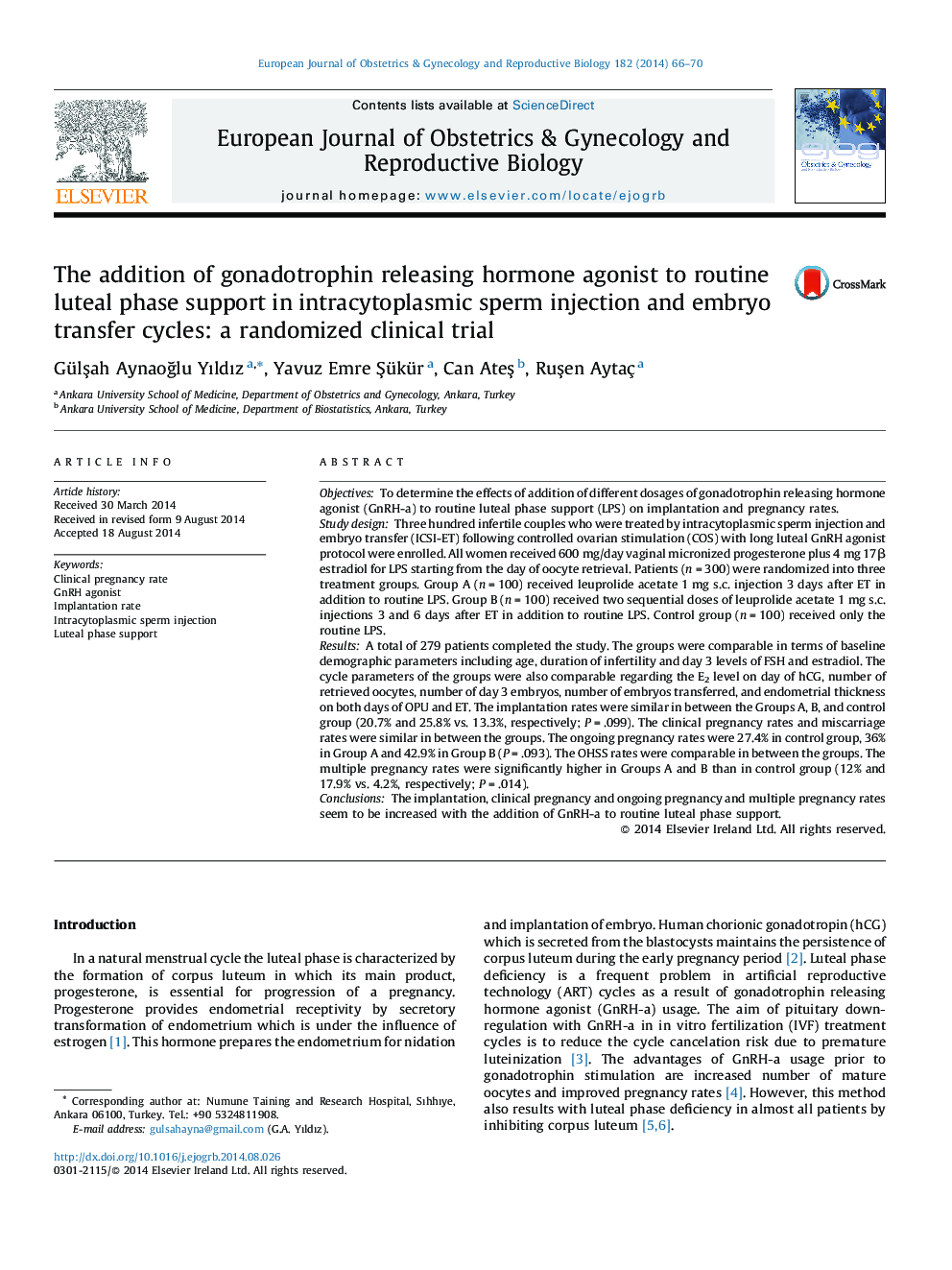| کد مقاله | کد نشریه | سال انتشار | مقاله انگلیسی | نسخه تمام متن |
|---|---|---|---|---|
| 6173443 | 1599799 | 2014 | 5 صفحه PDF | دانلود رایگان |
ObjectivesTo determine the effects of addition of different dosages of gonadotrophin releasing hormone agonist (GnRH-a) to routine luteal phase support (LPS) on implantation and pregnancy rates.Study designThree hundred infertile couples who were treated by intracytoplasmic sperm injection and embryo transfer (ICSI-ET) following controlled ovarian stimulation (COS) with long luteal GnRH agonist protocol were enrolled. All women received 600 mg/day vaginal micronized progesterone plus 4 mg 17β estradiol for LPS starting from the day of oocyte retrieval. Patients (n = 300) were randomized into three treatment groups. Group A (n = 100) received leuprolide acetate 1 mg s.c. injection 3 days after ET in addition to routine LPS. Group B (n = 100) received two sequential doses of leuprolide acetate 1 mg s.c. injections 3 and 6 days after ET in addition to routine LPS. Control group (n = 100) received only the routine LPS.ResultsA total of 279 patients completed the study. The groups were comparable in terms of baseline demographic parameters including age, duration of infertility and day 3 levels of FSH and estradiol. The cycle parameters of the groups were also comparable regarding the E2 level on day of hCG, number of retrieved oocytes, number of day 3 embryos, number of embryos transferred, and endometrial thickness on both days of OPU and ET. The implantation rates were similar in between the Groups A, B, and control group (20.7% and 25.8% vs. 13.3%, respectively; P = .099). The clinical pregnancy rates and miscarriage rates were similar in between the groups. The ongoing pregnancy rates were 27.4% in control group, 36% in Group A and 42.9% in Group B (P = .093). The OHSS rates were comparable in between the groups. The multiple pregnancy rates were significantly higher in Groups A and B than in control group (12% and 17.9% vs. 4.2%, respectively; P = .014).ConclusionsThe implantation, clinical pregnancy and ongoing pregnancy and multiple pregnancy rates seem to be increased with the addition of GnRH-a to routine luteal phase support.
Journal: European Journal of Obstetrics & Gynecology and Reproductive Biology - Volume 182, November 2014, Pages 66-70
